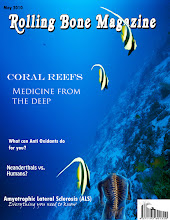
Written by: Haroun Zayed
Fredrick Grant Banting was born on November 14th, 1981 in Alliston, Ontario. He was the youngest of five children of William Banting and Margaret Grant. Fredrick Banting was educated in Alliston for elementary and high school. Upon graduating he applied to enter the army but was refused due to having glasses. Upon this unfortunate news he entered the University of Toronto for divinity but later transferred into medicine. In 1916 he earned his M.B and immediately joined the Canadian Army Medical Corps and served in France for the majority of the world war. In 1918 Fredrick Banting was wounded in combat at the Battle of Cambrai. However even with his wound he remained for 16 hours helping other wounded soldiers until he was forced to stop by another medic. For his heroics on that day Fredrick Banting was awarded the Military Cross for heroism under fire in 1919. Out of the 150 000 that were nominated, he was one of the 2877 individuals that received it.
Upon returning from the war Fredrick Banting worked for a short period of time as a practitioner in London, Ontario. He then began to study orthopaedic medicine and was resident surgeon at the hospital for sick children in Toronto from 1919-1920. From 1920 to 1921 Banting would work as at his general practice as well as teach part time in the University of Western Ontario for orthopaedics and Anthropology. He later moved back to Toronto to give lectures in Pharmacology at the University of Toronto from 1921-1922. During that time he was awarded his MD along with a golden medal.
However, earlier in the years Banting had become very interested in Diabetes after reading an article in a medical paper about the pancreas. The work of many other scientists had determined that diabetes was caused by the lack of secretion of a protein hormone by the pancreas known as insulin. Insulin was supposedly responsible for controlling the metabolism of sugar so that blood sugar levels do not exceed normal and cause diabetes. Many other scientists had attempted to supply the missing insulin into patients by giving them pancreas extracts but all attempts had failed, presumable because insulin had already been destroyed. The problem was then how to extract insulin before it was destroyed.
This was where Banting would make his mark on history. Upon reading that article in the medical journal Banting came up with the idea of extracting insulin before it was destroyed. He suggested that ligation of the pancreatic duct would destroy the cells of the pancreas which secrete trypsin (enzyme that destroys insulin) thus allowing the build up of insulin such that after a certain amount of time it could be extracted. However this was just a hypothesis that was yet to be tested.
Determined to test it out, Banting went on to discuss his idea with several individuals including J.R.R. Macleod (professor of physiology at the University of Toronto) whom provided him with the facilities to experiment his theory. Along with an intelligent medical student by the name of Dr. Charles Best as his assistant, Banting and Best started the work that would lead to the discovery of insulin.
In 1922 Banting had been appointed as the Senior Demonstrator in Medicine at the University of Toronto, and in 1923 he was elected to the Banging and Best Chair of Medical Research. He was also appointed as Honorary Consulting Physician to the Toronto General Hospital, The Hospital for Sick Children, and the Toronto Western Hospital. In addition to his medical degree, Banting has also achieved the LL.D. degree in Queens as well as the D.Sc. degree in Toronto in 1923. However his greatest award must be the Nobel Prize in Physiology or Medicine for 1923, which he shared with Macleod. Upon receiving this award the Canadian government awarded him a life annuity of $7,500. Furthermore Banting was also appointed member of many medical academies and societies in Canada and abroad. To add a final cherry on the cake Dr. Fredrick Banting was knighted in 1934.
Even though Frederick Banting was a very busy man he still found time to marry Marion Robertson in 1924 and have a child in 1928 named William. Unfortunately though, this marriage ended in a divorce in 1932, only for Banting to remarry in 1937 to Henrietta Ball. Soon after his second marriage Banting would go on to join the Royal Canadian Air Force to research the physiological problems encountered by pilots flying in high altitudes. He would go on to head a clinical investigation unit of the RCAF in a secret facility in Toronto. Unfortunately Fredrick Banting would die in a disastrous and untimely death in an air crash in Newfoundland while en route to England to conduct experiments for his research project.
Banting’s legacy still lives on today in all the diabetics who depend on insulin to live. He is immortalized in the yearly Banting lectures given by a diabetes expert hosted by the American Diabetes Society. Furthermore his name is found all over the country and in the world on many institutions. He even has a crater named after himself on the moon. Finally, in 1994 Banting was inducted into the Canadian medical hall of fame, and in 2004 he was voted as the fourth greatest Canadian by viewers of the Canadian Broadcasting Corporation (CBC). Fredrick Banting shall forever be remembered for his dedication to serving his country and helping mankind, he truly is a Canadian hero.
Biography:
work
CBC. Top Ten Greatest Canadians. 20. 15 April 2010
Elsevier Publishing Company. "Frederick G. Banting." Nobel Lectures (1965): 1922-1941.
Fetters., Sara M. 12 December 2002. 27 April 2010
Figure
Dunder, Jonathan. Frederick Banting. 26 August 2008. 15 April 2010

No comments:
Post a Comment